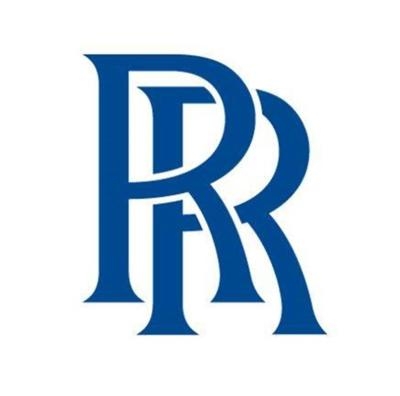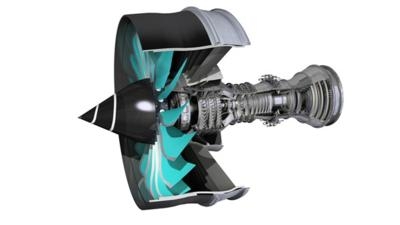British Steel—and Carbon-Composite and Titanium …
Rolls-Royce announced on 19 December 2022 that it would begin testing its UltraFan aero engine demonstrator in early 2023. Comprising a suite of bleeding-edge technologies conducive to enhanced fuel-efficiency, lower emissions, greater sustainability, and lower operating costs, the UltraFan, in addition to being the world’s largest aircraft powerplant, is among its greenest.

Notwithstanding the environmental accountability evident in the UltraFan’s engineering, Rolls-Royce asserts the platform’s constituent technologies are scalable to the creation of engines with thrust outputs ranging from 25,000-pounds to 110,000-pounds.
The UltraFan demonstrator has been transported from its build-workshop to Rolls-Royce’s Testbed 80, where it has been mounted for testing. Testbed 80—the interior area of which is larger than a Premiership football pitch—was specifically designed to house UltraFan, and cost £90-million ($109.5-million) to build. The voluminous construct opened in 2020 at Rolls-Royce's Derby, U.K. branch—the selfsame facility at which the famed British marque builds the Trent XWB-97 engines by which Qantas's Airbus A350-1000s will be powered.
Contrary to the longstanding practice of developing engines for specific aircraft, the UltraFan is not destined to power any airliner. Rather, the contraption is fully and only a technology demonstrator by which Rolls-Royce seeks to vet a gamut of architectures for possible application to extant or future undertakings.
The UltraFan demonstrator features an 11.6-foot (3.5-meter) carbon-composite/titanium fan, the 18 blades of which sport titanium leading edges; a superlative power gearbox, the planetary gears of which have been tested to a peak output of 87,000-horsepower; and an Advanced Low Emissions Combustion System (ALECS) capable of running on one-hundred-percent Sustainable Aviation Fuel (SAF). All told, the UltraFan is 25% more fuel-efficient than Rolls-Royce’s first-generation Trent engine.

Speaking on the milestone occasion of the UltraFan demonstrator’s relocation to Derby, Rolls-Royce president of civil aerospace Chris Cholerton remarked: “Seeing the UltraFan demonstrator come together and getting ready for test in Testbed 80 is a great way to end the year. We have all been waiting for this moment, which is such an important milestone for the program and for the team who have worked on it. The next stage will be to see UltraFan run for the first time on one-hundred-percent Sustainable Aviation Fuel in 2023, proving the technology is ready to support more sustainable flight in the future.”
In the near term, Rolls-Royce intends to laterally-migrate technologies and proficiencies from the UltraFan platform to its Trent family of engines. In so doing, the OEM set out to reduce fuel-burn and CO2 emissions of the powerplant by which iterations of Airbus’s A330, A330neo, A340, A350, and A380 airliners, as well as Boeing’s 777 and 787 aircraft families are powered.
In time, Rolls-Royce predicts advancements born of its UltraFan program will engender improvements of as much as ten-percent in the fuel-efficiencies of both narrow and wide-body jets. Compelled by prevailing fuel-costs, airline CEOs—whose eyes are attuned to green’s many shades—are apt to take notice of Rolls-Royce’s efforts.
 Classic Aero-TV: VerdeGo Debuts VH-3 Hybrid-Electric Powerplant
Classic Aero-TV: VerdeGo Debuts VH-3 Hybrid-Electric Powerplant NTSB Prelim: Grumman American Avn. Corp. AA-5B
NTSB Prelim: Grumman American Avn. Corp. AA-5B ANN's Daily Aero-Linx (12.02.25)
ANN's Daily Aero-Linx (12.02.25) Aero-News: Quote of the Day (12.02.25)
Aero-News: Quote of the Day (12.02.25) Aero-News: Quote of the Day (12.03.25)
Aero-News: Quote of the Day (12.03.25)




